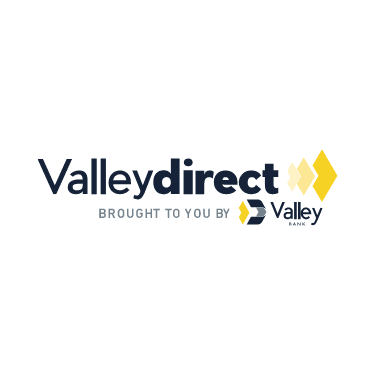You’ve got $250K saved, and you want to know how to invest it wisely. Reaching that figure is a huge accomplishment, so congrats. It took a lot of discipline and hard work to get this amount, and with continued hard work and discipline you can grow that $250K even further.
Tucked away in a high-yield savings account at the bank, your money could possibly see a decent return, but keeping that money in a bank account isn’t necessarily the best option.
With a balanced and diverse investment strategy, your quarter million dollars could see a 7 percent to 10 percent return on investment. Or even higher.
There are plenty of ways to invest $250K, from buying land to picking individual stocks in a business you like.
Best Ways to Invest $250K
Here are seven different options for you to consider when investing $250,000.
- Work with a Financial Advisor
- Build an Emergency Fund
- Open an IRA
- Stock Market Investments
- Real Estate Investment Property
- Peer-to-Peer (P2P) Lending
- Alternative Investments
1. Work with a Financial Advisor
Talking to a financial advisor about ways to build an investment portfolio may be the smartest thing you do.
They can offer broader guidance on different investment products like ETFs, stocks, and bonds, explaining the volatility and risk-reward balance of different options.
And on a personal level, an advisor can help you identify how much money you’ll need for your short-term and long-term goals, and the right allocation so you can minimize risk and get the best returns.
J.P. Morgan’s Personal Advisors can create a custom plan for your savings and investment needs and provide continual expert guidance. There are annual fees that start at 0.5 percent for a portfolio balance of $250K or greater, but they are now waiving fees for your first six months.
INVESTMENT AND INSURANCE PRODUCTS ARE: NOT A DEPOSIT • NOT FDIC INSURED • NO BANK GUARANTEE • MAY LOSE VALUE2. Build an Emergency Fund
Most experts recommend you have enough funds set aside to cover at least three to six months of living expenses, called an emergency fund. Others, like noted money guru Suze Orman, insist you need at least eight to 12 months.
The funds should be easily accessible so you can withdraw them immediately, but this doesn’t mean you need to stash your funds under your mattress or in a low-interest savings account at the bank.
Here are some other options to save for a rainy day fund so the money is readily available but still earning a decent rate of return.
- Certificate of Deposit (CD): These are deposit products where the bank or credit union will hold your funds, in a certificate of deposit, for a set period of time. The institute will then pay the account owner a fixed yearly amount of interest.
- Money Market Account (MMA): A money market account is a type of savings account offered by banks and credit unions. Up to $250K, funds are insured by FDIC (for banks) or NCUA (for credit unions). Your financial institution may limit the number of monthly withdrawals permitted.
- High-Yield Savings Account: Offers a better return on investment than a typical savings account, which has APYs of around 1 percent or less.
- I Bonds: Issued by the U.S. Treasury, an I Bond is a savings bond that earns interest and protects the consumer from inflation. If you purchase an I bond issued from November 1, 2023 to April 30, 2024, you’ll get an annualized 5.27% return for the first six months.
3. Open an IRA
An IRA is a common financial acronym and it stands for “individual retirement account.” It offers a tax-advantaged way for you to save for your retirement.
If you put $5,000 in an IRA today and didn’t touch it for 30 years, that sum would grow to $50,313 assuming an average annual rate of return of 8 percent.
Ideally, you want to continue investing more funds every year until you reach retirement age so grow your initial deposit into a healthy 7-figure sum.
There are three different kinds of IRAs:
- Traditional IRA: You make pre-tax contributions and the funds invested grow tax-deferred until you withdraw them during retirement.
- Roth IRA: Contributions are made with after-tax dollars and the money can grow tax-free. When the money is withdrawn for retirement, you don’t have to pay taxes.
- Rollover IRA: This is when you contribute money that you’ve “rolled over” from a qualified retirement plan into a traditional IRA.
4. Stock Market Investments
The most common forms of stock market investments are individual company stocks or bonds, index funds, mutual funds, and exchange-traded funds (ETFs).
In some instances, they may even pay dividend yields.
These options provide diverse ways for you to buy company-specific bonds or stocks, or baskets (groups) of stocks and bonds. Baskets are generally designed to match or exceed the overall performance of the Standard & Poor’s 500 index (S&P 500).
The S&P 500 features the 500 largest publicly traded companies on the U.S. stock exchange. Since 1957, the S&P 500 has seen an average 10.25 percent yearly return on investment.
To get started investing, you can open an online brokerage account or work directly with a personal advisor at a financial management company.
There are even robo-advisor options too, like Betterment, Wealthfront, or Acorns.
5. Real Estate Investment Property
Investing in land or real estate has outstanding potential for growth, and can help you build a more diversified portfolio outside of stocks, bonds, and other similar assets.
Rental properties like multi or single-family homes can bring in monthly rental income, and then eventual capital gains when the property is sold at a profit. If you don’t want to play landlord, there are property management companies who can handle all those obligations for you.
Beyond purchasing the property directly yourself — which ties up a lot of capital and brings significant risk — you can invest in commercial or rental property through real estate investment trusts (REITs) and crowdfunding investment apps.
REITs
REITs are firms that own or finance income-generating real estate in a range of property sectors. While there is risk, most REITs are traded on major stock exchanges and historically they’ve had an excellent track record and outperformed U.S. stocks more than 56 percent of the time.
Real Estate Crowdfunding Apps
Real estate crowdfunding investment apps are another option. Groundfloor, Crowdstreet, HappyNest, and AcreTrader are four popular apps out of many to consider. These apps have much lower minimums required to join, and you can invest in house flippers, rental housing, commercial property, and publicly traded REITs.
6. Peer-to-Peer (P2P) Lending
Peer-to-peer lending is an alternative to traditional loans that a consumer gets from a bank, credit union, or even loan sharks like payday lenders.
Here, groups of individuals (investors) fund consumer loans. Commonly, borrowing consumers have less-than-perfect credit but may demonstrate sufficient creditworthiness overall when looking at their employment history, income, and other factors.
You don’t need a million dollars to invest. Just $25 is needed to invest in many P2P loan offerings.
Investing in P2P lending can generate very healthy interest rates. Figures vary wildly on potential returns, but most seem to fall between 3.5 and 15 percent. Popular P2P lender, Upstart, boasts a gross average return of 11.2 percent.
In addition to Upstart, other P2P lending programs include:
- Kiva
- Prosper
- SoLo Funds
- Lending Club
7. Alternative Investments
Beyond stocks, bonds, and the real estate market, there are many other investment alternatives to explore.
- Infrastructure: These investments are an offshoot of real estate. It involves the ownership of real property that generates value, like owning a cellular phone tower, oil rig, or part of an oil pipeline.
- Precious metals: This asset class contains gold, silver, palladium, platinum, rhodium, copper, and other precious metals. (Some of these metals may also be considered commodity metals.)
- Fine art: Invest in fine art and future DaVincis through art investment apps like Masterworks. Contemporary art, says Masterworks, has seen a 14.1 percent average annual return over the past 26 years.
- Collectibles: Beyond fine art, rare coins, rare stamps, precious gems, comic books, timepieces, and Fabergé eggs.
- Commodities: These are goods that are interchangeable with one another, regardless of the producer. Coffee, wheat oil, natural gas, and even cattle are also examples of commodities. They are traded through futures contracts.
- Cryptocurrencies: You can invest in virtual, blockchain currency like Bitcoin, Ethereum, or Tether. You can purchase crypto directly through a cryptocurrency exchange like Kraken, Coinbase, or Binance, or in fintech investment apps like SoFi or Robinhood.
These non-traditional investments have the potential for higher returns than the stock market and can bring diversification to your portfolio. Additionally, commodities tend to perform very well during inflation.
But these alternative investments are considered riskier than more traditional options and it can take longer to see any return.
Additionally, these assets are illiquid which means they tie up your cash flow and it can be more difficult to appraise them. Estimated market values have been known to fluctuate wildly from the actual selling price.
FAQs
What does long-term investment mean?
Long-term investment typically refers to a period of five years or more. So if you were to invest in Apple, Amazon, or another tech company for the long term, you would plan on holding stocks for at least five years before selling.
How much interest will $250,000 earn in a year?
In a high-yield savings account, $250,000 could earn $6,250 with a 2.5 percent return. While you can find higher-yield savings rates, typically it comes with restrictions on the balance (i.e., interest paid for balances up to $50K) or it may only be offered to you for the first year.
By contrast, if you invested $250,000 in the stock market you could see an annual return of $12,500 to $25,000.
Is $250K too much money to have in savings?
Probably, yes. In case of a rainy day, you want to have anywhere from 3 to 12 months in your savings account.
According to the U.S. Bureau of Labor Statistics (BLS), the average household has total monthly expenses of $5,577.33.
This means $250K is enough to keep the average family afloat for over 44 months when experts suggest they need $16,732 to $66,928 set aside to weather 3 to 12 months.
If you stash away more money, you’re missing out on excellent investment opportunities.
What happens if you have more than $250,000 in savings?
Beyond being lucky enough to have this much cash, a deposit of greater than $250,000 is not protected by the U.S. government. If the bank fails, you could lose your money.
The Federal Deposit Insurance Corporation (FDIC) and National Credit Union Association (NCUA) insure deposits up to $250,000.
Can you retire on $250,000?
That amount is probably not enough for a traditional retirement where you can cease working altogether for two or more decades. But by following the 4 percent rule, $250K may be enough for a modest retirement that you supplement with a part-time job or other side hustle.
The 4 percent rule means you can withdraw 4 percent of your retirement savings during your first year of retirement, and then that same amount every year after but in the following years the sum would be adjusted for inflation.
This means that you would have had $10K a year during your first year of retirement, or $833.33 every month. If you factor in $1,781.63, the average American retiree social security benefit, you would have $2,614.93 a month.
How Should You Invest $250k
You’ll find a wealth of ways to invest your $250K so that it continues to make more money every year, building financial freedom and reaping the sense of security it brings.
But make sure to be smart about how you invest your money. Do your due diligence and study the different options, and how they align with your long-term and short-term savings goals.
And for everyone, new investors or seasoned investors alike, it’s always an excellent idea to consult with a financial advisor.







No comments yet. Add your own